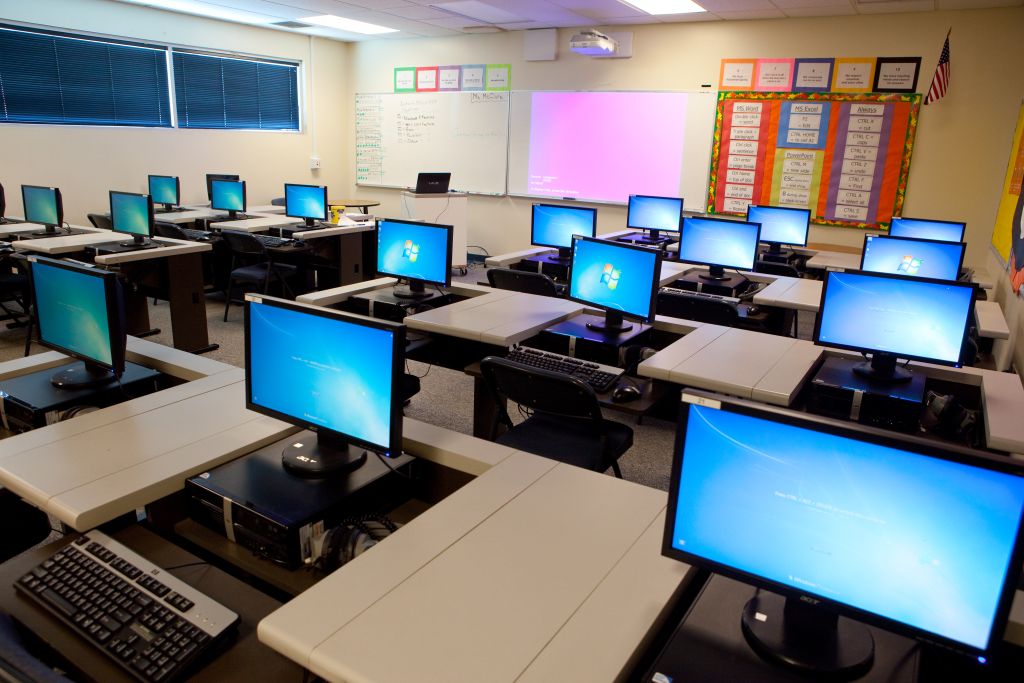
Among certain classes that students attend on college campuses only a select few of professors will allow the usage of technology to follow class discussions. By allowing some students to use Microsoft Word on laptops and some to take notes on their cellphones aides them to excel in their courses. Other students prefer to take hand written notes because it tends to stick more while writing then typing away. Teachers who use the smart board in past experiences tend to connect their laptops and teach the lesson through Microsoft PowerPoints or surf the web to show the class articles and videos with the relation to lesson.
ECG 200 teacher, Abel Rodriguez, J.D., a lawyer in practice who prefers not to be titled professor has a method with technology to engage the class. “I think it is really helpful to engage different people’s learning styles, and some people I feel really benefit from having a visual component to lessons.”
Rodriguez uses the smart boards in his Immigration, Law and Social Justice class to show videos of the presidential race with interviews and debates and also shows documentaries of the immigration of young children from Central and South America to the United States.
“I use PowerPoints to have something visual along with what we are discussing. I also use videos. I’ll use clips from documentaries or brief YouTube clips to get people thinking about an issue,” he said.
Although Abel Rodriguez encourages the use of technology in his lessons, the use of technology from students, such as phones and laptops, are a different story. “Generally I don’t, if there’s a particular activity that requires a cellphone or a laptop then bring out your device.”
Abel Rodriguez is one of the more loose teachers when allowing the use in technology in class. Religion 121 professor, Dr. Leonard Norman Primiano, has a more uptight approach when it comes to incorporating technology in lessons. Dr. Primiano follows strictly by the course syllabus, stating that cellphones do not only interrupt a student’s will to learn and comprehend the content, but also serves as a disruption to the other students from grasping the content. Meaning if other students can’t learn because someone is being a disruption then it will affect their work which in return the disrupter will receive a harsh penalty for doing so. Dr. Primiano follows by the traditional style of work because, “…it engages the students more and when test time comes it they [students] will be able to study and recite the information written down into the exam.”
The difference between Abel Rodriguez and Dr. Primiano classes is that in ECG 200 one is allowed to have their phone just sitting on the desk in class while in Religion 121 the phone cannot even vibrate showing that there is a presence which will lead to 10 points reduced from the final grade.
Students have plenty methods of using technology in classes that allow phones and laptops. Junior IST major Michael Diggins tends to switch it up when taking notes in classes. “In some classes like lectures I feel the need to type my notes when the information is being told to me but when teachers use PowerPoints I tend to either write things down or just download the PowerPoint after class.”
On Cabrini’s campus the classes that are taken here tend to be a 14:1 class environment, this will make it easier to get to know the professor and allow one to constantly ask questions. Also, professors on this campus are able to enforce their electronic usage policies that the students will follow by, so wonder what it is like to be in a larger environment with huge class lectures.
University of Rhode Island Criminology graduate Ryan Brooks has experiences being in large lecture classes. With 32% of classes on URI’s campus being between 20 and 29 students, teachers are flexible with both handwriting notes and electronically taking notes.
“The professors really didn’t care how you took notes or sometimes if you really take notes but you would want to jot down notes,” he said. Brooks preferred hand written notes due to the fact that he was accustomed to handwritten notes before technology usage in classes was a trend.
“I was born in 1990, by the time I was in high school people just started owning flip-phones and almost everyone took notes by hand so when I got to college I still had that handwritten mentality. I used my laptop but not as much.”
The use of technology in classes range from class sizes, professors policies and also what students find more convenient.


